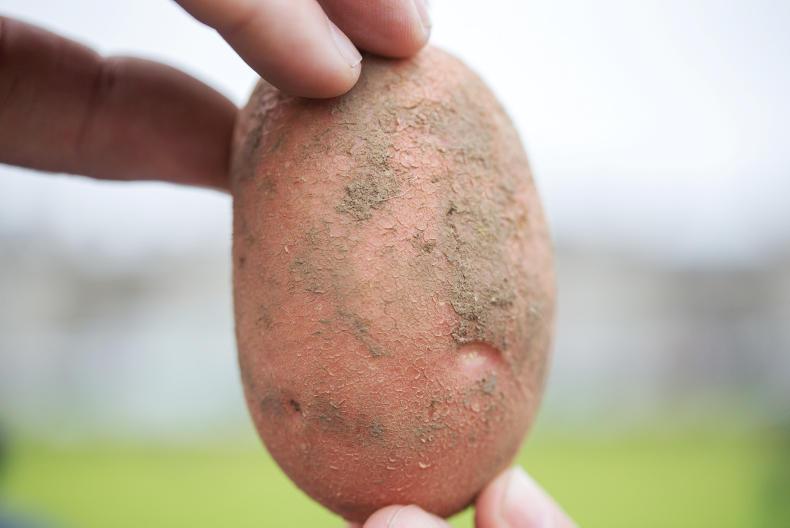Cutting back on nitrogen, variable spacing at planting and satellite soil mapping have all been shown to improve the performance of potato crops at the AHDB spot trials.
The field tests at Bruce Farms in Angus showed how precision farming will use modern technology to fine tune input application.
Commercial trials showed that changing the spacing between tubers depending on the soil type within a field can increase volumes of saleable potatoes for the salad and seed market.
The trial discovered that heavy clay ground produced fewer larger potatoes and that planting tubers closer together resulted in more produce to sell.
Satellite mapping has advanced so far that crop growth and health can be monitored across fields
The trial used Maris Piper planted at two different spacings within the one field switching between sandy lighter soil and heavier clay soil plantings depending on the results of soil mapping.
This resulted in a higher volume of potatoes at the critical size of 42mm which hits retailer salad specification and gets a higher price. Tubers which miss this spec are worth half the value.
Satellite mapping has advanced so far that crop growth and health can be monitored across fields.
This allows farmers to apply irrigation to parts of the field which needs it as opposed to uniformly. This results in more even-sized potatoes and reduced water usage.
Trials have shown that decreasing cultivation depths reduced costs and increased marketable yield
AHDB also looked at reducing cultivation depths to save time and costs across three seasons on Bruce Farms.
No bed tilling resulted in a smaller planting cost without a sacrifice to the saleable yield. Trials have shown that decreasing cultivation depths reduced costs and increased marketable yield.
Reduced nitrogen on potato crops was also trialled on farm, with three crops getting 179, 147 or 90kg/ha of N. The reduced nitrogen crops also didn’t get any top dressing. The results showed that all three crops yielded between 28-29t/ha despite the different levels of inputs.
Dry matter within the potato did fall slightly in the low nitrogen crops but there was no bruising of skins and black dot wasn’t seen as an issue either.
Confidence in the potato sector is helping to drive the rental market in Angus and Perthshire.
Potato ground is reported to be making £350/acre near Perth while land beside Arbroath is quoted as making up to £700/acre, the highest in Scotland.
